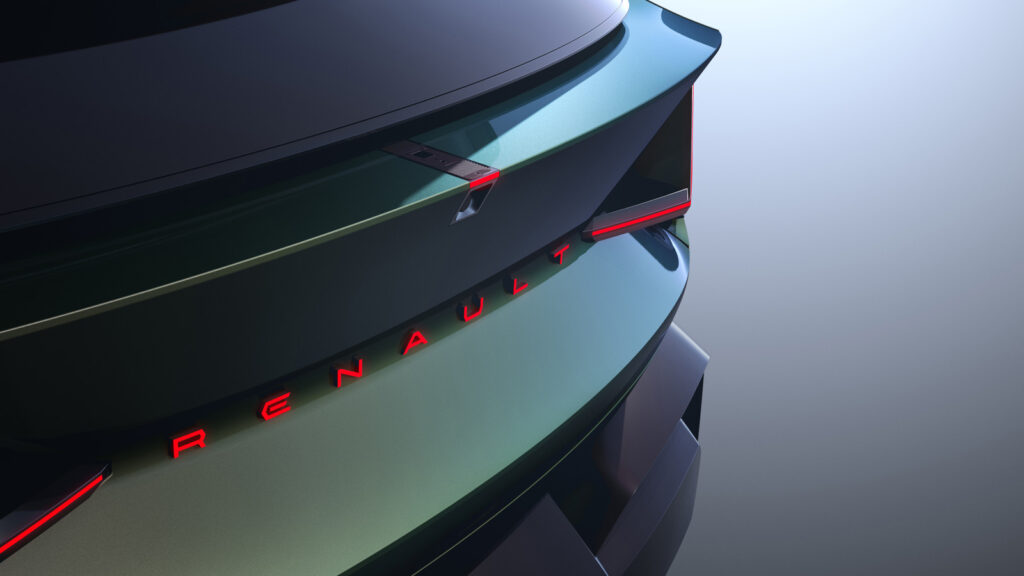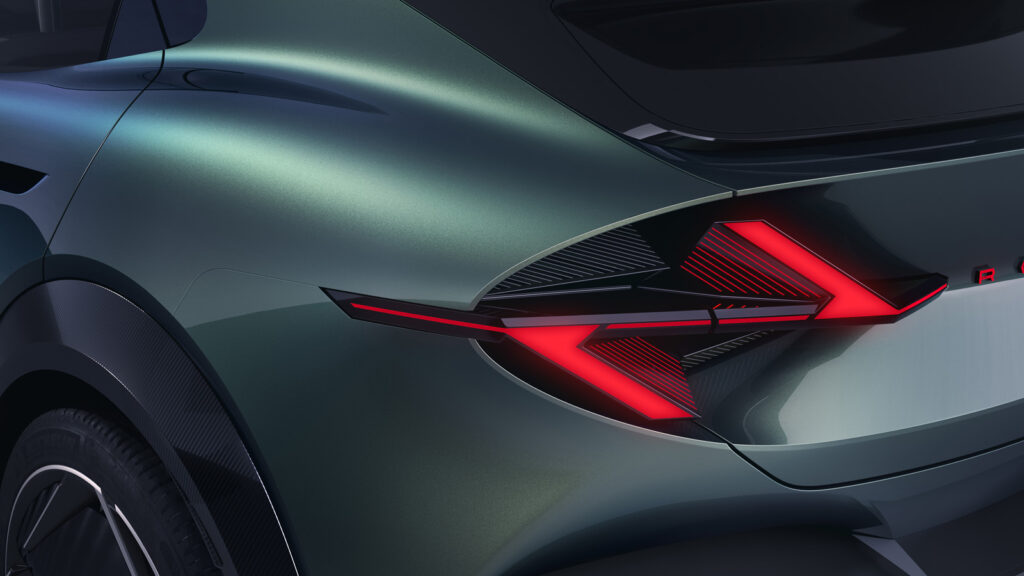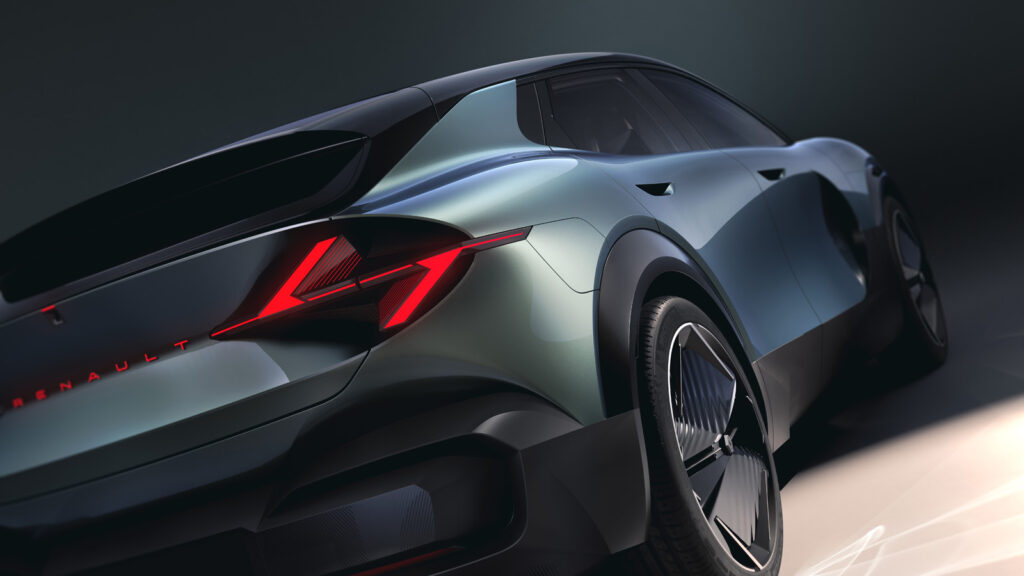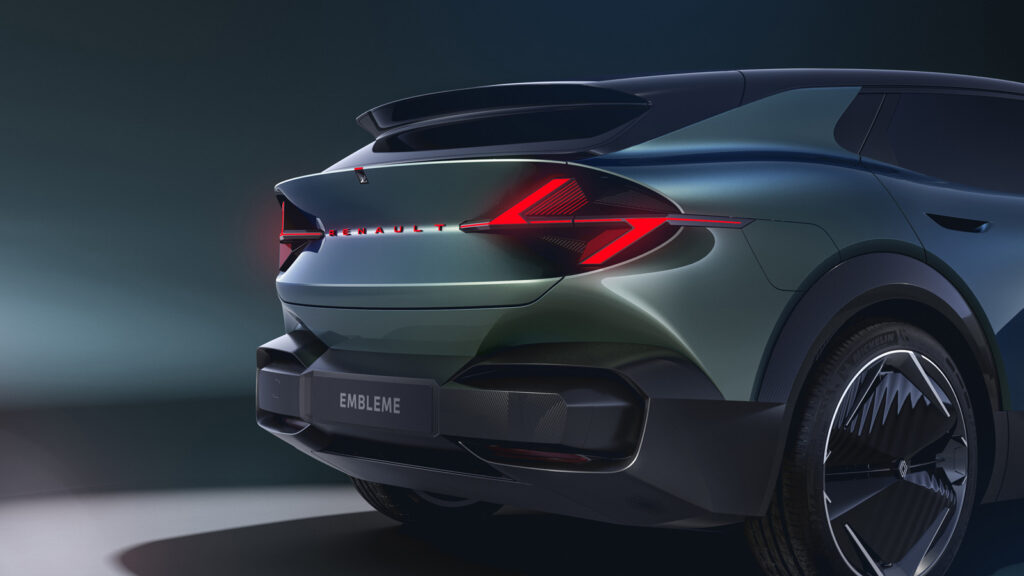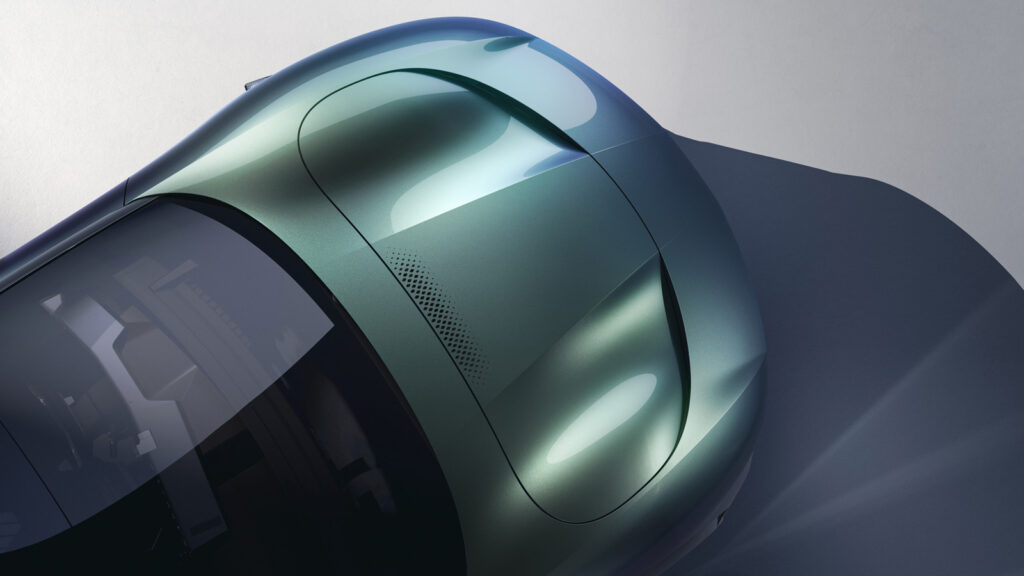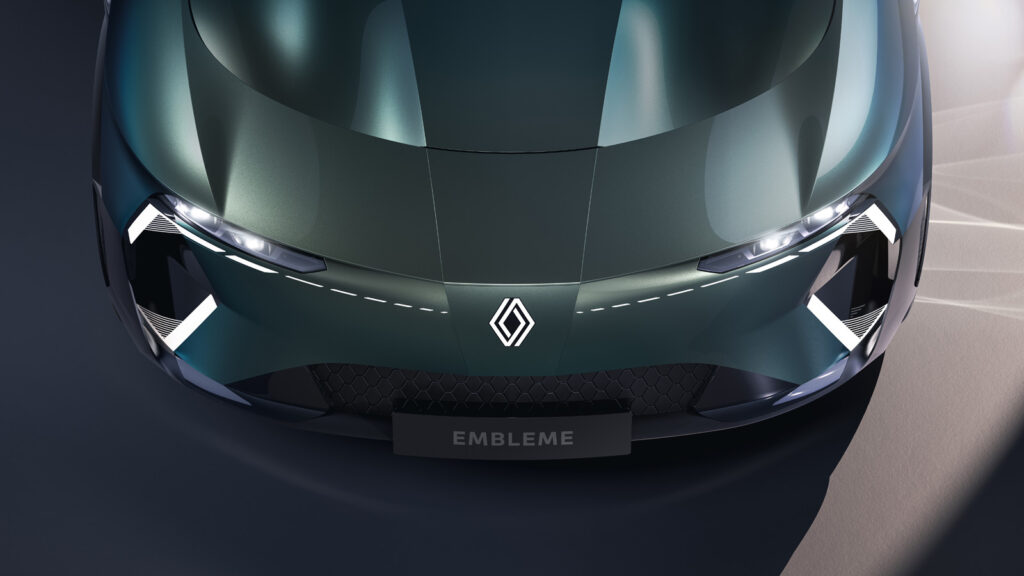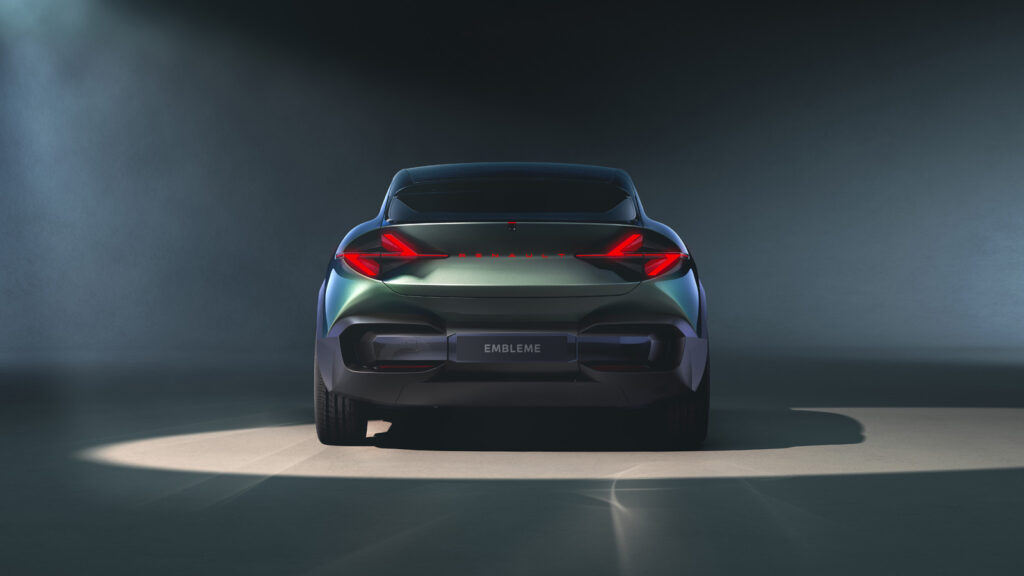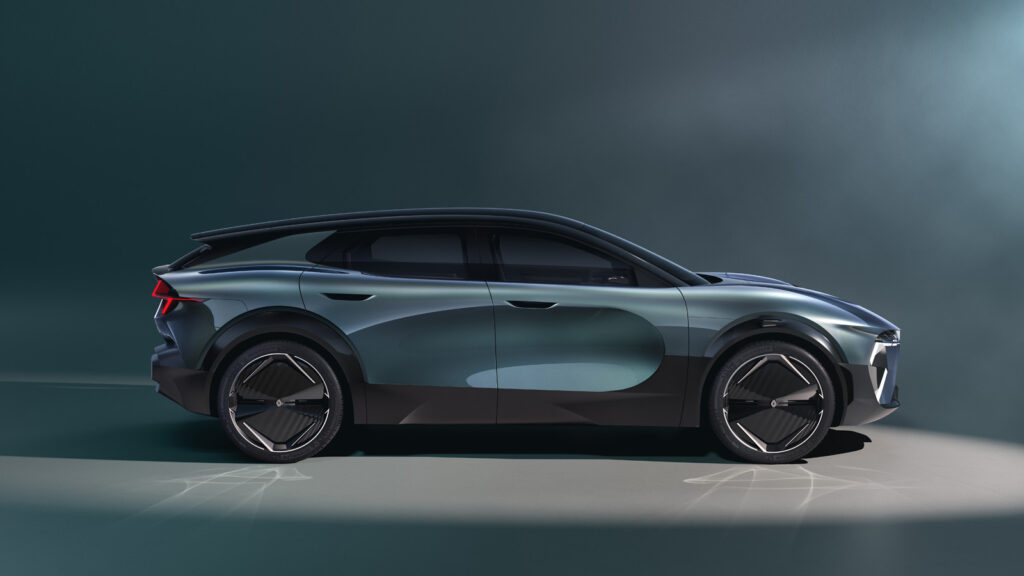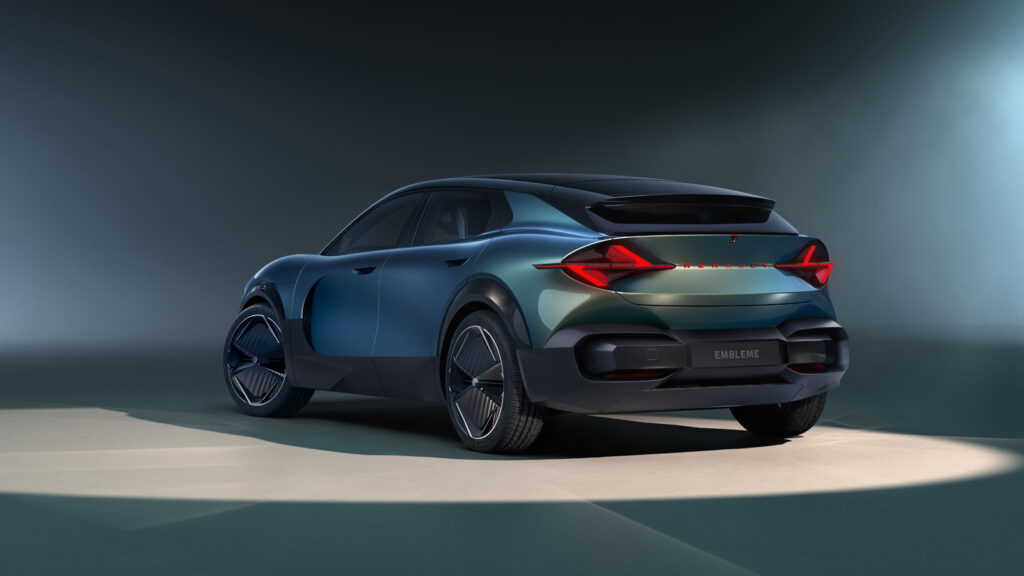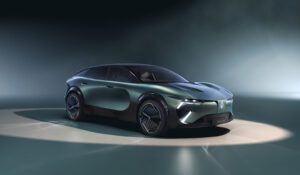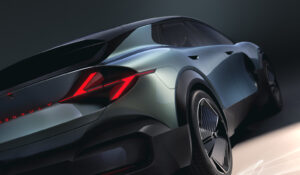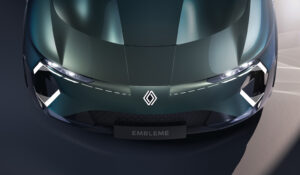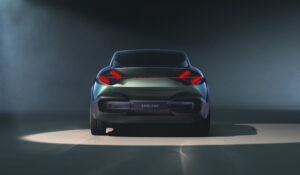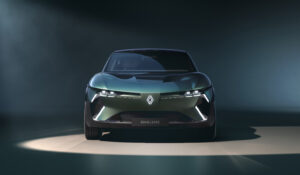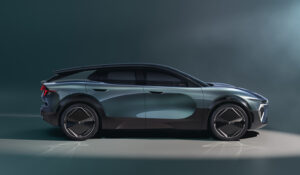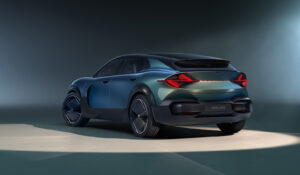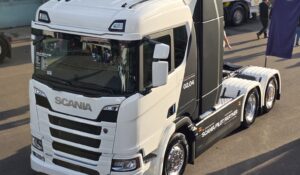Renault’s Emblème: The hydrogen-hybrid family car that beggars belief
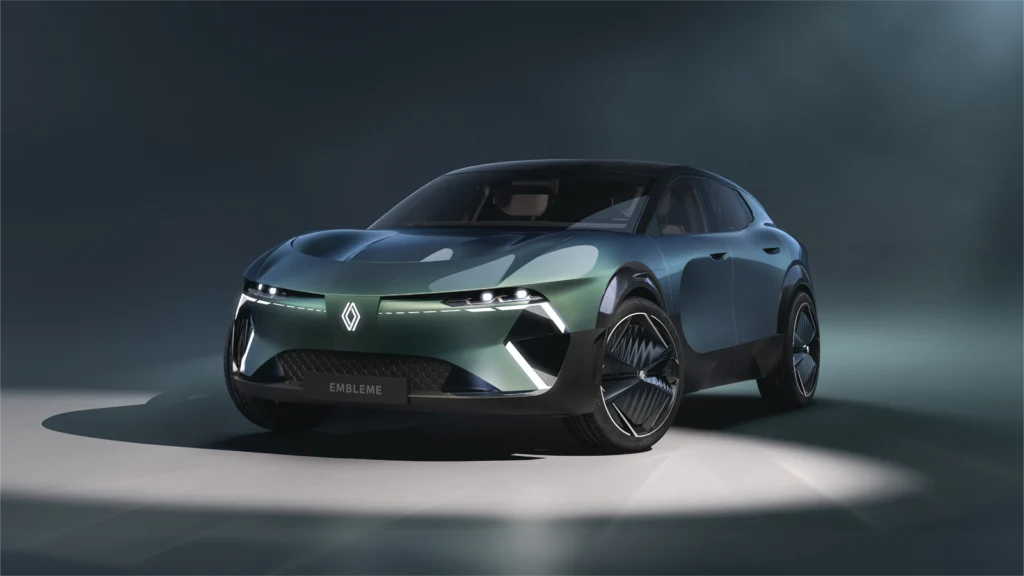
Renault is making headlines again with today’s jaw-dropping reveal – the Renault Emblème (that’s Emblem in English).
It’s a hydrogen-electric hybrid concept car that’s set to be revealed at the 2024 Paris Motor Show in a couple of weeks time.
Renault is pulling out all the stops with this one, bringing together cutting-edge design, industry-leading efficiency, and a powertrain that could change how we think about low-carbon mobility.
Hydrogen powered cars
The buzz around hydrogen vehicles has been growing for years, but the Emblème takes things to a whole new level.
It’s not about just reducing emissions, it’s also about making a vehicle that can stand toe-to-toe with the best of what electric, hybrid, and internal combustion engine (ICE) cars have to offer in terms of range, convenience, and style.
In short, this concept could be a real game-changer for anyone who’s still on the fence about hydrogen, and if vehicles like this take off, could also be part of the spark that drives the incentive to bolster investment in more comprehensive hydrogen refuelling infrastructure.
So, what makes the Renault Emblème such a big deal? Let us dive into the details – everything from the impressive powertrain to the cutting-edge design and the bold environmental goals that Renault has set for this concept.
Hydrogen and battery electric working in symphony
The heart of the Renault Emblème is its ‘dual power energy system’, which combines a 40 kWh battery with a 30 kW hydrogen fuel cell.
On paper, this might sound like just another hybrid, but the way that Renault has engineered it makes all the difference.
The battery is more than enough for everyday tasks – nipping to the shops, commuting to the office, setting fire to local speed cameras…
But when you’re ready to hit the open road, that’s where the hydrogen comes in.
Hydrogen fuel cells have always held massive promise for long-distance driving, and the Emblème leans into that strength.
Setting off with a full tank, and just one mid-route hydrogen fill-up, this car can travel up to 1,000 km – no range anxiety, no endless waiting for the battery to charge.
Each refuelling stop takes less than five minutes, so you’re back on the road as fast as you’d fill up a petrol car.
With a quick stop-off in Lyon, you can drive the 950 km from the Boulevard St. Michel in Paris to Juan-les-Pins to get an even sun tan, on your back, and on your legs, all while covering most of that journey on clean, efficient hydrogen power.
What really sets this apart from a typical hybrid or battery electric vehicle (BEV), though, is its versatility.
You get the everyday convenience of electric driving, but with the long-range capability that hydrogen offers.
Renault estimates that on longer journeys, 75% of the electricity consumed by the Emblème will be produced by the hydrogen fuel cell, making it an incredibly efficient machine for long trips.
That’s a big deal when you consider that many EVs still struggle with range and charging infrastructure – issues the Emblème sidesteps altogether with its hydrogen option.
At least you can combine the *cough* current unreliability of the infrastructure of both technologies, and have somewhat of a chance at reaching your destination.
Worth mentioning though that the EU has mandated hydrogen filling stations be built every 200km on major routes around the EU, and in every “urban node” (basically any city with an airport, port, or large train station) by 2030. Good news there, then.
The design of the Renault Emblème
Renault didn’t just focus on performance and efficiency with the Emblème, though – they made sure it looks just as good as it performs.
The car’s design, in typical French style, is a real work of art, blending ‘shooting brake’ styling, with sleek, modern curves that wouldn’t look out of place in a sci-fi film.
At 4.8 metres (15.75 ft) long, the Emblème offers a balance of form and function that many larger family cars struggle to achieve.
It’s long and low, with a roofline that flows gracefully from front to back, giving it the feel of a coupé while maintaining the practicality of an estate.
But this isn’t just about looking good – it’s about maximising efficiency through smart aerodynamics.
The Emblème has a drag coefficient (Cx) of just 0.25, making it one of the most aerodynamically efficient vehicles in its class.
Renault didn’t achieve that by accident, either. The car’s design is packed with clever features aimed at reducing air resistance.
The rearview mirrors are replaced with small cameras tucked into the wheel arches, and the windscreen wipers are hidden beneath the bonnet to keep things as slippery as possible.
Even the door handles are recessed into the bodywork, minimising drag and helping the car glide through the air more easily.
Renault also took things up a notch by working with the BWT Alpine F1 Team, using their ‘digital twin technology’ to simulate airflow around the car and optimise both passive and active aerodynamics.
The result being? A vehicle that’s not only eye-catching but also incredibly efficient when it comes to slicing through the air at high speeds.
Add in the active diffuser at the rear, which automatically adjusts to balance the airflow and reduce drag, and you’ve got a design that’s as functional as it is beautiful.
Decarbonisation of family cars
Of course, no concept car in 2024 is complete without a strong focus on sustainability – and the Emblème delivers in a big way.
Renault is aiming for a whopping 90% reduction in CO2 emissions over the car’s entire life cycle.
That’s not just emissions from driving – it’s the total impact – from the raw materials used in production, to the energy needed to recycle the car at the end of its life.
The key here is Renault’s holistic approach to decarbonisation.
Yes, slashing tailpipe emissions is certainly important – but it’s also about making sure that the materials used to build the car have a minimal impact on the environment.
The Emblème is packed with recycled and low-carbon materials, and Renault is committed to using renewable energy throughout the production process.
They’re also exploring ways to implement more reused parts and circular manufacturing processes, which could further reduce the vehicle’s carbon footprint.
Renault’s target? To limit the Emblème to just 5 tonnes of CO2 equivalent over its entire life cycle.
For context, a typical electric vehicle today, like the Renault Megane E-Tech, generates around 24 tonnes of CO2 over its life cycle, and a traditional petrol-powered car like the Renault Captur hits an eye-watering 50 tonnes.
So, achieving a 90% reduction in CO2 emissions isn’t just ambitious – it’s astonishing.
Lighter, smarter, more efficient
The Emblème’s efficiency goes beyond just its advanced powertrain, it’s also built to be much lighter than most vehicles in its class.
Tipping the scales at 1,750 kg, the boffins at Renault have made a conscious effort to shed every unnecessary kilogram, knowing that every bit of weight impacts not only energy consumption but also emissions throughout the vehicle’s life.
This weight reduction is even more impressive when you consider that the car’s battery pack is a relatively small 40 kWh, making it lighter, cheaper, and more environmentally friendly than the larger full-fat batteries used in many of today’s long-range EVs.
It’s a smart move by Renault, striking a balance between offering enough range for daily use, and keeping the weight low to improve efficiency.
And despite its lighter weight, the Emblème still packs plenty of room inside for family road trips or long-haul drives.
With a wheelbase of 2.90 metres, it offers ample space for both passengers and luggage, making it a practical option for those who need a family-friendly vehicle that doesn’t sacrifice efficiency or style.
The broader picture
Hydrogen’s potential as a clean fuel source has been talked about for years, but the Emblème might be one of the first cars to really showcase how versatile it can be.
Renault isn’t just building a car, it’s more than that. They are building a vision for what mobility could look like in a decarbonised world.
The Emblème is part of Renault’s broader goal to achieve “net-zero carbon by 2040 in Europe” and “2050 worldwide”.
This aligns with industry-wide trends that are pushing automakers to rethink everything from the materials they use, to the types of powertrains they offer.
What’s exciting about the Emblème is that it doesn’t just represent a leap forward for Renault – it represents a shift in how the entire industry is approaching sustainability.
By combining the strengths of both electric and hydrogen technologies, Renault is proving that the future of family cars doesn’t have to be limited to either/or solutions.
The hybrid approach offers the best of both worlds: the convenience of electric power for short trips and the extended range of hydrogen for longer journeys.
What’s next?
While Renault hasn’t announced a specific release date for the Emblème just yet, all eyes are on the Paris Motor Show this October, where the car will make its official debut.
And Renault’s “Ampere” division is set to unveil even more details at the end of the month, giving us a full breakdown of the emissions data and the technology behind this groundbreaking concept.
One thing’s for sure, though – if the Renault Emblème lives up to its promises, it could signal a revolutionary new symbiotic era for hydrogen-electric vehicles.



